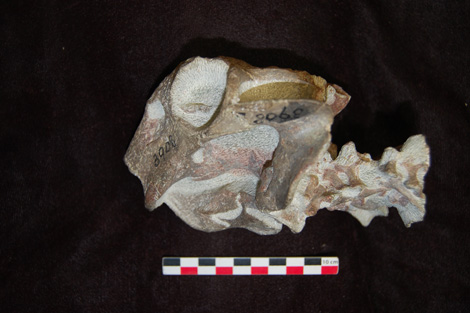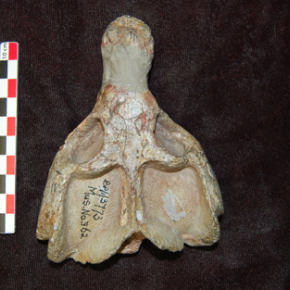
Our ancestors were already warm-blooded just before the Permian-Triassic extinction event
For how long have warm-blooded animals existed? The time at which this character first appeared in the ancestors of mammals has long been debated. Now, dating analyses carried out on 90 fossils by an international collaboration including the Laboratoire de Géologie de Lyon – Terre, Planètes, Environnement (CNRS/ENS de Lyon/Université Claude Bernard Lyon 1) have shown that warm-blooded species first appeared among our ancestors during the Late Permian, 252 – 259 million years ago. In addition, this new character may have enabled them to survive the Permian-Triassic extinction event, 252 million years ago. The work is published in the journal eLife dated 18 July 2017.
Today, only birds and mammals are able both to produce their own body heat (this is known as endothermy) and maintain it at a high, stable temperature (homeothermy). The combination of both these characteristics, endo-homeothermy, first appeared in the therapsids, the reptilian ancestors of mammals. 270 to 252 million years ago, the therapsids consisted of six subgroups, one of which, the cynodonts, gave rise to mammals. The researchers brought together 90 fossils discovered in South Africa, Lesotho, Morocco and China, 63 of which were therapsids belonging to 22 different species, in order to study their oxygen isotopic1
composition. The incorporation of the two stable isotopes of oxygen, 16O and 18O, into teeth and bones varies according to an animal's metabolism. A warm-blooded animal will therefore have a different isotopic composition from a cold-blooded animal that shares the same environment.
Differences in isotopic composition between certain therapsids and other contemporary species showed that eight species from two different lineages of therapsids were already endo-homeothermic several million years before the Permian-Triassic extinction event. One of the lineages, the dicynodonts, is now extinct, but the other one, the cynodonts, gave rise to the mammals. Both survived the extinction event 252 million years ago, in which 75% of terrestrial species died out. The key to their resistance to sudden climate change may lie in their endo-homeothermy.
As part of an international collaboration, the work involved the Laboratoire de Géologie de Lyon: Terre, Planètes et Environnement (CNRS/ENS de Lyon/Université Claude Bernard Lyon 1), the Laboratoire d'Ecologie des Systèmes Naturels Anthropisés (CNRS/Université Claude Bernard Lyon 1/ENTPE), Laboratoire de Physique du Globe de Paris (CNRS/IPGP/Université Paris Diderot), the Centre de Recherches en Paléobiodiversité et Paléoenvironnements (CNRS/MNHN/UPMC), the University of Witwatersrand (South Africa), and the Chinese Academy of Sciences.

Skull of the cynodont therapsid Diademodon sp. from the Middle Triassic of South Africa.

Skull of the dicynodont therapsid Lystrosaurus murrayi from the Lower Triassic of South Africa.
- 1A chemical element can exist in different forms called isotopes, which differ by the mass of their nuclei. Isotopic composition refers to the relative abundance of different isotopes. Isotope analysis is used to determine these relative abundances, which constitute a sort of fingerprint.
Oxygen isotopes suggest elevated thermometabolism within multiple Permo-Triassic therapsid clades. Rey, K., Amiot, R., Fourel, F., Abdala, F., Fluteau, F., Jalil, N.-E., Liu, J., Rubidge, B. S., Smith, R. M. H., Steyer, J.-S., Viglietti, P. A., Wang, X. Lécuyer, C., eLife, 18 July 2017


